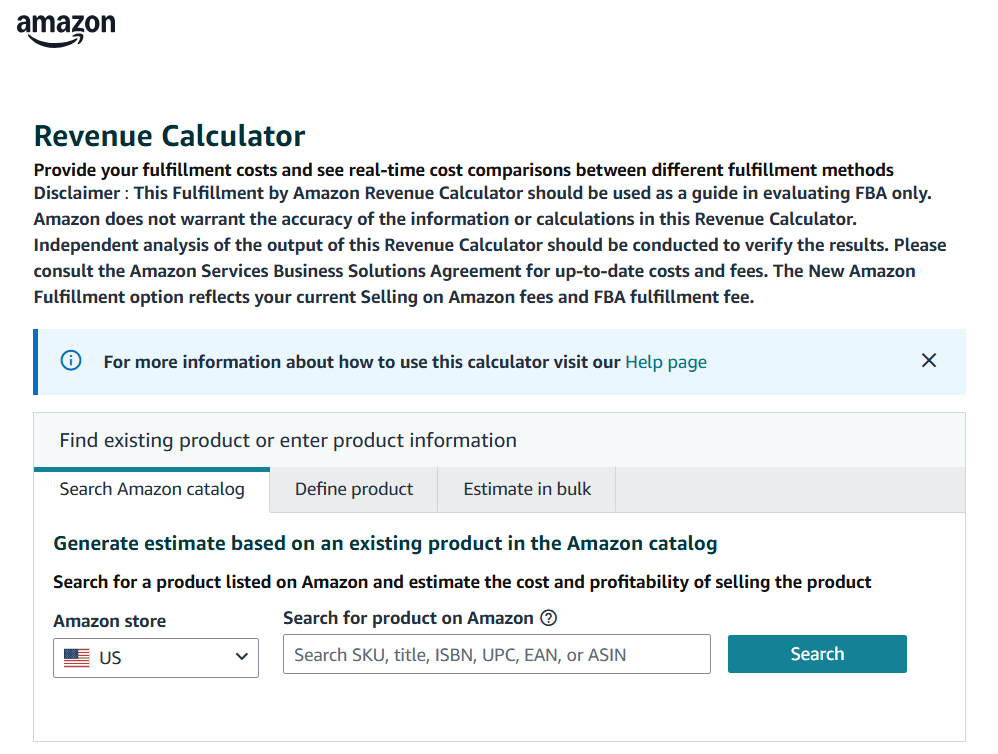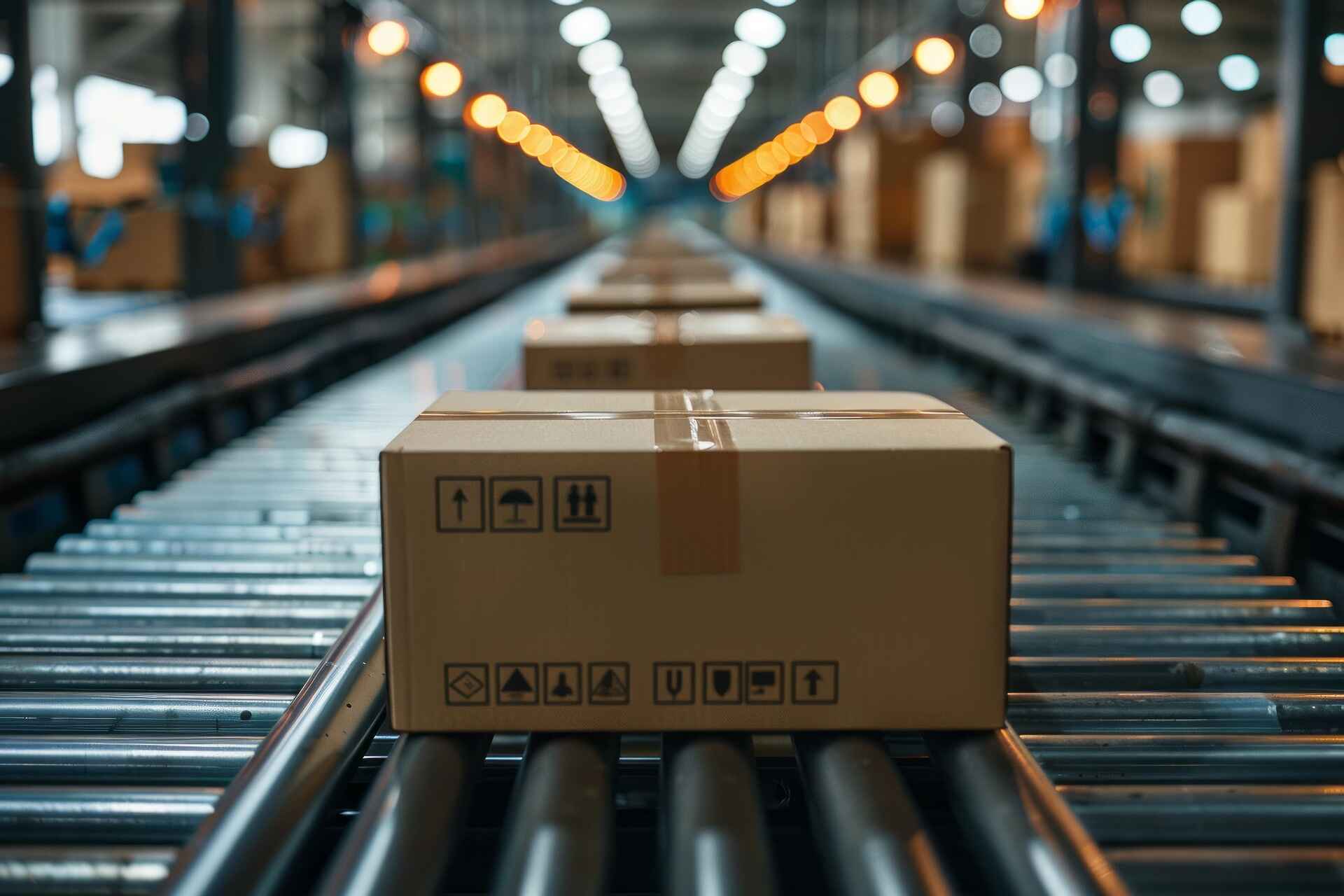Before starting an Amazon business, it’s essential to understand the full scope of costs involved. From seller account options to fulfillment and referral fees, Amazon’s fee structure can significantly impact your bottom line.
Whether you’re testing the waters with a few products or planning to build a scalable ecommerce brand, having a clear grasp of Amazon seller pricing is key to maximizing profitability and making informed decisions.
-
Amazon seller fees include referral fees, fulfillment costs, storage fees, and optional expenses like ads or prep services.
-
The Individual plan charges $0.99 per item sold, while the Professional plan costs $39.99 per month but offers more tools and no per-item fee.
-
Referral fees usually take about 15% of your sale price and vary by product category.
-
FBA is more convenient but adds extra Amazon FBA fees like pick and pack fees and storage fees, while FBM gives you more control but requires more work.
-
Knowing how to calculate Amazon selling fees helps you price your products correctly and avoid surprise charges that eat into your profits.
In this guide, I’ll walk you through every cost you need to know—from upfront startup fees to the less obvious charges like long-term storage or advertising—so you can launch your Amazon journey with confidence and clarity.
Amazon Seller Account Options: Individual vs. Professional
The first step to selling on Amazon is deciding which seller plan best fits your goals: the Individual or the Professional plan. These two options come with different fee structures, and choosing wisely can affect your bottom line from day one.
The Individual plan doesn’t charge a monthly subscription fee, but you’ll pay a $0.99 per-item fee for each product sold. It’s ideal for casual sellers or anyone planning to sell fewer than 40 items per month. If you’re just testing out product ideas or making seasonal sales, this plan keeps your upfront costs low.
The Professional plan, on the other hand, costs $39.99 per month and eliminates the per-item fee. It’s a better choice if you’re selling regularly and want access to powerful tools like bulk listing uploads, advertising campaigns, and advanced analytics. It also gives you eligibility for the Buy Box—an essential for increasing conversions.
From a cost perspective, the Amazon individual vs professional account cost becomes clear with a quick calculation. Selling 40 items a month on the Individual plan results in $39.60 in per-item fees—almost the same as the Professional plan. Sell any more, and you’re effectively paying more for fewer features.
Pro tip: If you plan to use Amazon’s PPC advertising or need third-party integrations (like inventory tools), the Professional plan is the way to go. Even if you’re not hitting 40 sales just yet, the additional features can help you scale faster and manage Amazon seller fees more efficiently.
Amazon Referral Fees Explained
Every time you sell something on Amazon, Amazon takes a cut. This is called a referral fee—basically a commission you pay for using their huge marketplace and customer base.
On average, Amazon referral fees are about 15% of your product’s total price, but the exact amount depends on what you’re selling. For example:
- Books: 15%
- Toys: 15%
- Electronics: 8%
So if you sell a toy for $30, Amazon keeps $4.50. If you sell a $100 laptop, they might take $8.
These fees also apply to the total price the customer pays, not just the item, but also any shipping or gift wrap you charge. That’s why it’s important to check your category in Amazon Seller Central—some categories even have a minimum fee, no matter how cheap your product is.
Pro tip: If you’re not sure where your product fits, use Amazon’s referral fee chart or a free Amazon fee calculator to double-check before setting your price.
If you’re using Fulfillment by Amazon (FBA), referral fees are in addition to other Amazon FBA fees like pick and pack fees, storage fees, and shipping. These all add up quickly, so when calculating your Amazon selling costs, don’t leave out the referral fee. It’s one of the biggest charges.
And yes, to answer a common question: Does Amazon charge per item sold? Yes, especially if you’re on the Individual plan, where there’s a per-item fee of $0.99 on top of referral fees.
In short, understanding how Amazon seller fees work, especially referral fees, can help you avoid pricing mistakes and keep more of your profit.
Amazon FBA vs. FBM Cost Comparison
When selling on Amazon, you can choose between Fulfilled by Amazon (FBA) and Fulfilled by Merchant (FBM). With FBA, Amazon handles storage, shipping, customer service, and returns.
This hands-off option is ideal for scaling but comes with Amazon FBA fees, including pick and pack fees, storage fees, and possible returns processing fees for certain categories.
For example, selling a 1 lb. toy at $30 through FBA might cost you around $8.22 in total fees—leaving you with $21.78 before ad spend and cost of goods.
With FBM, you manage storage, shipping, and customer service yourself. It gives you more control and flexibility, but also means more work.
Using the same $30 toy example, your Amazon selling costs might total $10.75 when you factor in shipping and packaging, leaving you with $19.25. Your margins depend heavily on how efficiently you handle logistics.
Here’s a quick side-by-side breakdown:
Cost Factors FBA FBM
Who ships the product? Amazon You (the seller)
Pick and pack fees ~$3.22 (for a 1 lb. item) Not applicable
Storage fees ~$0.87 per cubic foot/month (standard size) Your own storage costs
Shipping costs Included in FBA fees ~$5.50 (carrier-based)
Packaging costs Included ~$0.75 per order
Customer service & returns Handled by Amazon (extra return fees may apply) You handle everything
Prime badge eligibility Yes No (unless Seller Fulfilled Prime)
Estimated total cost (1 lb. toy) ~$8.22 ~$10.75
Net revenue (on $30 sale) ~$21.78 ~$19.25
FBA works well if you’re focused on convenience and Prime visibility, while FBM suits sellers who already have efficient shipping or want more control over fulfillment costs. There’s no one-size-fits-all answer—it all depends on your product, margin, and how involved you want to be.
Additional and Optional Amazon Selling Costs
On top of the basic Amazon seller fees, there are some extra costs that can sneak up on you if you’re not paying attention.
One common one is the refund administration fee. If you refund a buyer, Amazon doesn’t give you back the full referral fee. They keep either 20% of the fee or $5—whichever is less. For example, if your referral fee was $15, Amazon might still keep $3. If you deal with a lot of returns, this can eat into your profits.

You might also run into high-volume listing fees. If you have over 100,000 listings—like sellers with huge catalogs—Amazon charges about half a cent per listing every month. That adds up fast if you don’t stay on top of it.
Advertising is another big one. If you run Sponsored Product Ads, expect to pay around $0.50 to $1.50 per click. That’s optional, but in competitive categories, it’s often necessary to get your product seen. A small ad budget can grow quickly if you don’t monitor your campaigns closely.
If you’re using FBA, you can let Amazon handle prep tasks like labeling, poly bagging, or bubble wrapping your products. These labeling and prep services cost between $0.20 and $0.50 per unit. For 500 items, that’s up to $250 extra. You might save money doing the prep yourself or using a third-party service.
Selling internationally? Watch out for currency conversion fees. Amazon charges about 2%–4% when converting your sales into U.S. dollars. If you make $1,000 in another country, you could lose $20 to $40 in fees just to convert the money.
Pro tip: Keep a spreadsheet or use seller tools to track these per-item fees, especially if you’re doing a mix of FBA and FBM. Knowing your full Amazon selling costs—not just the obvious ones—can help you protect your profits.
These costs may seem small, but they add up quickly. Whether you’re asking “Is it free to sell on Amazon?” or looking for ways to lower your fulfillment costs, staying aware of all the extras is key to long-term success.
Startup Costs to Sell on Amazon
What are the startup costs to sell on Amazon? That depends on what you’re selling, how much you’re starting with, and whether you use Amazon FBA or ship orders yourself (FBM). But here’s a basic idea to help you plan.
Most new sellers spend between $800 and $3,000 to get started. This includes buying inventory, paying for a seller account, covering Amazon seller fees, and a few extras like UPC codes and product photos.
If you choose the Professional Seller Plan, you’ll pay $39.99 per month. The Individual Plan doesn’t have a monthly fee, but Amazon charges a $0.99 per-item fee, which adds up fast.
So if you plan to sell more than 40 items a month, go with the professional plan—it’s cheaper in the long run. That’s the main point in the Amazon Individual vs Professional account cost decision.
You’ll also pay Amazon referral fees, which are usually around 15% of your sale price. For example, if you sell a $30 item, Amazon keeps about $4.50.
If you use Fulfillment by Amazon (FBA), there are extra fees like pick and pack fees, storage fees, and shipping. On average, Amazon FBA fees are around $3.22 per unit, but that can change depending on the size and weight of your product. This is where the Amazon FBA vs FBM cost comparison becomes important. FBA is easier but more expensive.
Here’s a table to give you a clearer picture:
Expense Estimated Cost
Product Inventory $500–$2,000
Professional Seller Plan $39.99/month
Amazon FBA Fees (per item) ~$3.22
Referral Fees ~15% of product price
UPC Codes (GS1) $30+
Product Photography $50–$300
Tools (e.g., Helium 10) $40–$100/month
Estimated Total $800–$3,000
Pro tip: Use Amazon’s free fee calculator to estimate how much Amazon will take per sale. It helps you see the full picture—including per-item fees, fulfillment costs, and Amazon selling costs—so you don’t end up losing money without realizing it.
Hidden Costs to Watch Out For
When it comes to selling on Amazon, some fees aren’t obvious at first, but they can hurt your profits if you don’t plan ahead. These are the Amazon selling costs that sneak up on many sellers, especially if you’re using FBA or managing returns yourself with FBM.
Long-term storage fees are a big one. If your products stay in Amazon’s warehouse for more than 181 days, you’ll get charged extra. That’s on top of the regular storage fees you already pay every month.
As of 2025, long-term storage can cost up to $6.90 per cubic foot or $0.15 per item, whichever is more. So if you’re selling seasonal items or bulky products, those fulfillment costs can pile up fast.
Another hidden fee is removal or disposal fees. Let’s say you have 500 items that aren’t selling and want Amazon to send them back to you or destroy them. You’ll pay about $0.50 to $0.90 per item, which means it could cost you $250–$450 just to get rid of dead inventory.
If you’re doing FBM, you also need to watch out for A-to-Z Guarantee claims and chargebacks. If a customer says they didn’t get their item or weren’t happy, Amazon might side with them, and you could lose the product and the money.
That’s one reason many sellers prefer FBA, even if Amazon FBA fees are higher, because Amazon handles customer service.
Here’s a quick comparison to make it clearer:
Hidden Cost What It Means When It Applies Example
Long-Term Storage Fees Charged after 181+ days in warehouse Twice a year (Feb & Aug) $6.90 per cubic foot
Removal/Disposal Fees Fee to remove or destroy unsold inventory Whenever you request it $0.60 × 500 units = $300
A-to-Z Claims/Chargebacks Refunds for FBM orders when buyers file complaints When a claim is filed Lose $25 sale + shipping cost
Pro tip: Use Amazon’s Inventory Health Report to track how long your products have been sitting. You can even set up automatic removals to avoid paying long-term storage fees.
Simply put, if you’re asking how much does it cost to sell on Amazon, don’t just look at the obvious numbers like Amazon seller pricing or per-item fees. These hidden charges can seriously affect your bottom line. Knowing where they hide—and how to avoid them—can help you stay profitable and stress-free.
How to Calculate Amazon Selling Fees
If you want to make a profit on Amazon, you need to understand how the fees work. Whether you’re using FBA or FBM, your earnings depend on more than just your selling price.
Here’s a simple way to calculate your profit:
Profit = (Selling Price – Referral Fee – Fulfillment Costs – Product Cost – Ads) ÷ Selling Price
Let’s say you’re selling a product for $30. Amazon usually takes a referral fee—usually 15% for most categories—which would be $4.50. If you’re using FBA, you’ll also pay Amazon FBA fees, which include pick and pack fees and storage fees.
These can cost around $5 total for a small item. Then you have to factor in what you paid for the product (let’s say $8) and any ad spend (maybe $3 for Sponsored Products).
Here’s a simple breakdown:
Item FBA Seller FBM Seller
Selling Price $30.00 $30.00
Amazon Referral Fee (15%) $4.50 $4.50
Fulfillment Costs $5.00 (FBA) $3.50 (USPS)
Product Cost $8.00 $8.00
Ads $3.00 $3.00
Estimated Profit $9.50 $11.00
As you can see, FBA costs more, but it also gives you benefits like Prime shipping and Amazon handling returns. On the other hand, FBM gives you more control and may be cheaper, but you have to ship everything yourself.
You can use Amazon’s free FBA Revenue Calculator to plug in your product info and see exactly what your costs will be. This is the easiest way to avoid guesswork and make better decisions.

Pro Tip: If you’re selling fewer than 40 items a month, you might be on the Individual plan, where Amazon charges $0.99 per item sold. But if you’re selling more, it’s cheaper to go with the Professional plan, which costs $39.99/month.
So, is it free to sell on Amazon? Not really—but if you plan ahead and understand your Amazon selling costs, you can still build a solid and profitable business.
Is It Free to Sell on Amazon?
At first glance, it might seem like it’s free to sell on Amazon—especially if you choose the Individual plan. This plan has no monthly fee, so technically, you can sign up and list products without paying anything upfront.
But once you make a sale, Amazon seller fees kick in. With the Individual plan, Amazon charges a per-item fee of $0.99 for every item you sell.
If you’re selling more than 40 items a month, those Amazon selling costs add up quickly. For example, 50 sales would cost you about $50 just in per-item fees.
In that case, it’s actually cheaper to switch to the Professional plan, which costs $39.99 per month and doesn’t charge that per-sale fee. That’s why it’s important to understand the Amazon individual vs professional account cost before deciding which one fits your business.
So, is it free to sell on Amazon? Technically, yes, but only if you don’t sell anything. Once you start making sales, you’ll pay for access to Amazon’s massive marketplace through referral fees, fulfillment costs, storage fees, and more.
As Jeff Bezos once said, “Your margin is my opportunity.” If you’re not careful with your numbers, those fees can eat into your profits.
Pro tip: If you’re just starting out and want to test the waters, the Individual plan works fine. But if you’re serious about selling or plan to grow, the Professional plan gives you better tools and saves money over time.
Either way, knowing how to calculate your Amazon selling fees early on can help you plan ahead and protect your profits.







